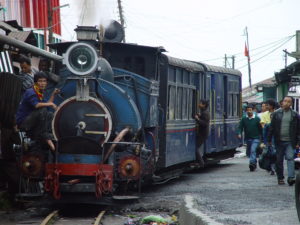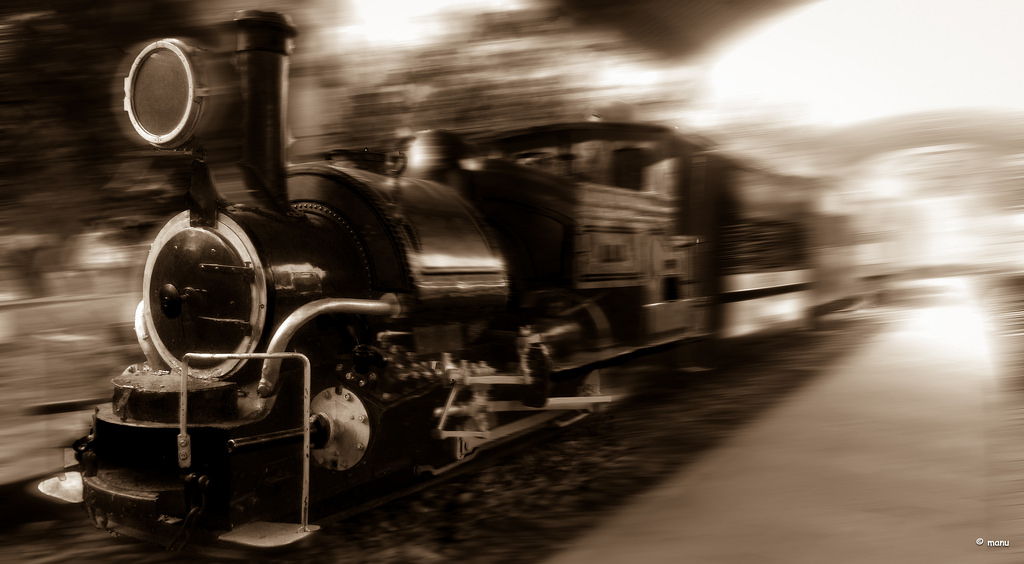It was on 2nd December 1999 that the “Darjeeling Himalayan Railway” was officially declared as a “World Heritage Site” by UNESCO. Now, the pertinent questions to be asked are, What exactly is this railway system, and why is it so unique? So, here is illustrating a few facts which hopefully shall help shed some light on what makes this travel system extremely fascinating.
Read More: 6 VISIT WORTHY NORTHEAST INDIAN HILL STATIONS

a. What is the “Darjeeling Himalayan Railway”, and how did it first originate?
[put_wpgm id=28]
Darjeeling Map
“A Toy Train service” is exactly what the “Darjeeling Himalayan Railway” provides for. It comprises of a 2 feet long “locomotive” that operates on a “narrow gauge railway”. Furthermore, this train service runs from New Jalpaiguri and Darjeeling in the state of West Bengal. The railway line (about 88 km in length) was constructed in between 1879 and 1881, and comprised of six zig zags and five loops. In addition, this railway service involves the use of four diesel operated locomotives. Historically speaking, it was Franklin Prestage, an agent of Eastern Bengal Railway that put forth to the government a proposal for this unique railway. The major reason being, the nonavailability of any train service that could connect Siliguri to Darjeeling. It was eventually a committee formed by the then lieutenant governor of Bengal Ashley Eden, which accepted Franklin’s proposal in 1879 that eventually led to the establishment of this unique railway service.
b. The “Locomotives” used by the “Darjeeling Himalayan Railway”:
The locomotives used in the “Darjeeling Himalayan Railway” services can be divided into two parts namely past and the present. With regards to the past, the engine used the “Third Garratt”model belonging to the D class 0-4-0 + 0-4-0. While in terms of the present, a steam as well as a diesel locomotive is used. The steam locomotive used currently belongs to a model called B-class which is constructed by “Sharp, Stewart and Company” which later became the “North British Locomotive Company”. As for diesel locomotives, there are four currently in use and they include “Nos. 601–2, 604 and 605 of the NDM6 class”.
c. The “Route” used and the “Stations” involved in the “Darjeeling Himalayan Railway”:
“Hill Cart Road” is the line used by the “Darjeeling Himalayan Railway”. This railway track is located on the road (for long stretches) and forms an integral part of the “National Highway 110”. Furthermore, these tracks are similar to those used by trams. In addition, since they are a part of the road itself, a “rockslide” could lead to blocking of the road as well as the track. The major stations in this railway line includes, New Jalpaiguri, Siliguri Town, Siliguri Junction, Ghum, Batasia Loop, and Darjeeling.
d. The popularity of the “Darjeeling Himalayan Railway” with regards to “Bollywood” and the “Television Industry”:
Due to the beautiful landscape that accompanies the “Darjeeling Himalayan Railway” line, it has been frequently used by Bollywood as well as in Television. In terms of movies, this fascinating railway line has been used in Barfi, Parineeta, and Raju Ban Gaya Gentleman. Additional, the famous song of Bollywood megastar Rajesh Khanna also makes use of this railway line and locomotive. As for television, it was BBC that produced three documentaries which was based on the mountain railways in India. It was the first documentary which was aired in 2010 which covered this unique railway line.
And so, if you intend to travel with a feeling of “nostalgia” in your heart, and truly enjoy the majestic landscape which surrounds this line then, you must travel via the “Darjeeling Himalayan Railway” at least once in your lifetime.
Also Read: CHERRAPUNJI – FACTS ABOUT THE WETTEST PLACE ON PLANET EARTH
Image Credits: Wikimedia Commons and Flickr

